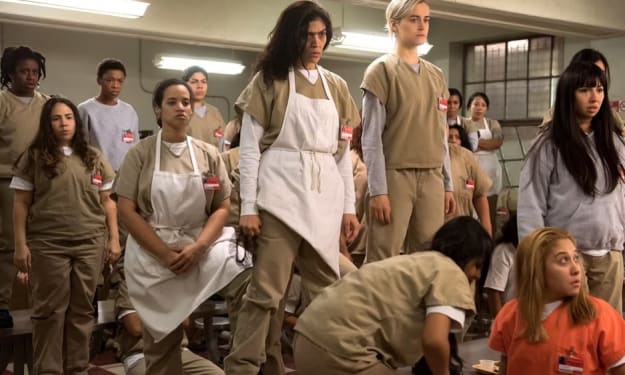Why the Graphic Depictions of Bullying in '13 Reasons Why' Are Necessary for Viewers
We can't keep sugarcoating life for everyone, right?

If you managed to make it through the Netflix original series 13 Reasons Why, then you're no doubt a little shaken up. After all, it's a show about a girl who leaves cassette tapes behind to tell those whom she feels are responsible for her suicide why she did it. The subject matter alone is a powerful thing, and many people who read the 2007 novel by Jay Asher wondered how Netflix would visually represent the story.
Now that Netflix subscribers are making their way through the first season, the response seems to be overwhelmingly positive, and it's definitely started important conversations about bullying and suicide. A lot of viewers are saying that it's one of the best teen television shows we've seen in years and that parents should watch it with their children.
On the flip side, there are others upset at its most graphic scenes, and wondering if such intense visuals were really necessary.
It's easy to speculate on whether 13 Reasons Why really needed to be as graphic as it was. Parents might worry about whether seeing such blunt depictions of bullying will do more harm than good. I mean, let's face it, if this was a movie it would easily be rated R for violence, language, teen substance abuse, suicide and sexual content.
But before you decide to just put this in the back of your queue based on the visual (and verbal) representations of bullying, it's important to think about why it's necessary to portray the subject matter so truthfully.
The Story Wouldn't Have Been As Powerful
That's why we see R-rated films, isn't it? To see a story that feels real and powerful? If that takes seeing someone get maimed or talked to in a certain way, then that's what it takes.
13 Reasons Why is really no different. The story is a difficult thing to deal with right from the beginning, but it just continues to get more and more intense as it goes on. Along with the reasons why Hannah Baker committed suicide getting more difficult for us to hear, the things that happen to (and around) her also become more difficult to watch. And for me, personally, I think that is a good thing.
As viewers, it's very likely that we wouldn't have been so heavily impacted if we wouldn't have seen what Clay's visions were. Without seeing how Hannah's sexual encounter with Bryce in the hot tub affected her physically and emotionally, we might not have understood her final conversation with Mr. Porter as well as we did.
If we wouldn't have actually seen Hannah committing suicide, we might have just shrugged it off as a simple catalyst for a television series. Sometimes it is just enough to mention something or lightly touch on a subject, but this was not one of those times.
'13 Reasons Why' Isn't Afraid To Show Us That Actions Have Consequences
Unlike countless other series (and even movies), 13 Reasons Why doesn't sugarcoat anything for us, and depicted "cause and effect" in a direct and honest way. While there are rather jarring visual depictions of suicide, physical violence, sexual assault, drug use and domestic violence, there isn't really a single moment where you feel that it's excessive.
Yes, it is very difficult to watch Hannah slit her wrists with a razor blade, but I don't think the show producers included the entire event to be gratuitous; I think it was included to show that suicide is in no way glamorous, and to reiterate that it is not something that we should shy away from talking about.
The honest visual representations within the show remind us that what we think we see isn't always what is happening. A prime example of this could be Zach's tape. Clay automatically assumed that Zach had crumpled up Hannah's love note and thrown it away, like she said on the tape. In reality, Zach kept the note and simply didn't reciprocate or acknowledge Hannah's feelings.
Although Zach didn't really handle things properly, Hannah misread the situation because no one had the knowledge of how to deal with it.
Thanks to the amazing cinematography, we see both sides of the story — from Hannah's perspective and what actually happened. We weren't treated to a repetitive depiction of Zach throwing Hannah's feelings back in her face, and Clay didn't continue to harass Zach for what he thought was done to Hannah. We candidly saw what we needed to see regarding that particular connection, and that was it.
Final Thoughts?
Not every television show or movie needs to be explicitly violent or use graphic language to get the point across. However, in this case, it was brutally necessary to depict everything at face value. It might make it that much harder to hear and see, but sometimes that is what viewers need to really feel the message of the story.
In the case of 13 Reasons Why, we needed the shock value to understand everything the story was telling us. And yes, that includes putting our eyes and ears through some things that we might not have expected (and might have wanted to live without seeing). Life is unexpected and bad things happen to people. Sometimes you really do have to watch others go through things to understand their reactions.
We can't censor what happens in real life, so why should the show do it for us?
About the Creator
Jenika Enoch
I love movies, music, sci-fi, and art. I'm a certified graphic designer and create my own art. Things that fuel me include equality, respect, and anything weird.






Comments
There are no comments for this story
Be the first to respond and start the conversation.